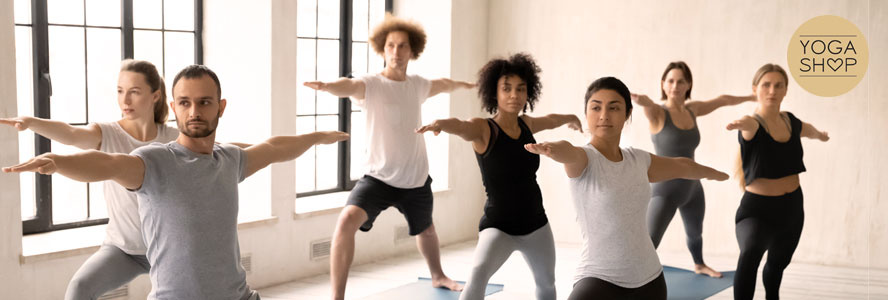Ashtanga Yoga: Explore the Practice & Philosophy of this traditional yoga style
Ashtanga Yoga is a type of yoga deeply rooted in the rich traditions of India. Ashtanga Yoga literally means "the eight limbs of yoga" which refers to the eight aspects that form the practical as well as philosophical foundation of this dynamic style of yoga.
The history: from Patanjali to Sharath Jois
Although the exact origins are difficult to trace, Ashtanga Yoga is often attributed to the legendary yogi Patanjali, who drafted the Yoga Sutras as instructions for yoga practice and spiritual growth. In this ancient text, the eight 'limbs' are discussed in detail. They form the core of Ashtanga Yoga and offer practical guidance on the path to self-realization and inner peace.
Characteristic of Ashtanga Yoga is the passing on of the tradition from teacher to student. For example, Sri Tirumalai Srinvasa Tattacharya was the teacher of Tirumalai Krishnamacharya and he in turn was the teacher (or 'guru') of Sri K. Pattabhi Jois, who is considered the founder of modern Ashtanga Yoga as we know it.
In 1948, Jois founded his Ashtanga Yoga Research Institute, from where he taught countless students the system of Ashtanga Yoga. After successfully completing an intensive period of study at the AYRI, students received the Authorization and assignment from Jois to further spread the knowledge of Ashtanga Yoga around the world; increasingly in the West since the 1960s.
After Pattabhi Jois passed away in 2009, the lineage was transferred to his grandson R. Sharath Jois, who currently teaches Ashtanga Yoga at the K. Pattabhi Jois Ashtanga Yoga Institute (KPJAYI) in Mysore. The current teaching method is known as "Mysore-style", named after the city where it is originally taught. Ashtanga Vinyasa Yoga has led to several spin-off yoga styles in the West, such as Power yoga, Vinyasa flow and Jivamukti.
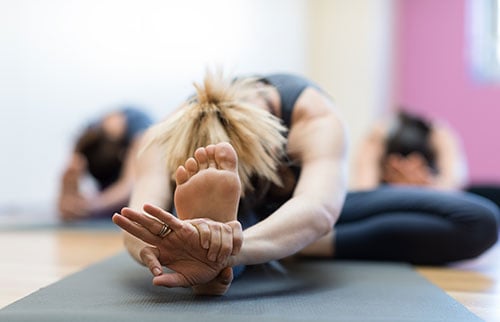
The popularity of Ashtanga Yoga
What has made Ashtanga yoga so popular in the West? The answer can probably be found in the versatility of this tradition. Ashtanga Yoga is known for being very effective in building your strength, flexibility, and stamina, while at the same time providing calmness and a clear mind. In addition, Ashtanga Yoga is founded on a deep spiritual dimension, allowing each practitioner to develop a deeper understanding of themselves and the world around them.
The philosophy of Ashtanga Yoga
A famous quote by Pattabhi Jois is "Ashtanga Yoga is 99% practice and 1% theory". And if you read Patanjali's Yoga Sutras on it, you will discover that the text in this book consists mainly of practical instructions; aspects that should be practiced in practice. The philosophy of Ashtanga Yoga thus forms an indispensable basis for practice, and is set out in the eight 'limbs':
- The Yamas: The five moral codes that practitioners of Ashtanga Yoga follow.
- Ahimsa (non-violence)
- Satya (truthfulness)
- Asteya (non-stealing)
- Brahmacharya (chastity)
- Aparigraha (non-heaviness)
- The Niyamas: The five personal disciplines that help the practitioner purify and develop himself.
- Saucha: Purity - This involves inner and outer purity, both physical and mental.
- Santosha: Satisfaction - Cultivating contentment and acceptance of what is, without desire for more.
- Tapas: Discipline - Developing self-discipline and determination in the practice of yoga.
- Svadhyaya: Self-study - Studying sacred texts, as well as reflecting on one's own thoughts, emotions, and behavior.
- Ishvara Pranidhana: Surrender to the Divine - Letting go of ego and relying on a higher power, acknowledging a spiritual aspect in life.
- The asanas: Asana means body postures; this forms the best-known aspect of yoga. They are the yoga postures performed to make the body stronger and more flexible, and to strengthen balance.
- Pranayama: Pranayama means "right breathing". These are the breathing exercises used to control and strengthen the life force, called prana. Through conscious breathing techniques, one can calm the mind and open energy channels.
- Pratyahara: Pratyahara refers to the withdrawal of the senses, where the practitioner learns to focus attention inward and detach from external stimuli.
- Dharana: Dharana means concentration, where the practitioner focuses on one object or point of focus, stabilizing the mind and preparing it for meditation.
- Dhyana: Dhyana represents meditation, in which the practitioner achieves a state of deep inner peace and clarity of mind through continuous concentration and observation of thoughts and sensations.
- Samadhi: Samadhi is the highest state of consciousness and is often described as enlightenment or oneness. In Samadhi, the practitioner experiences a deep connection with the universe and a state of timelessness and perfect happiness.
Although Patanjali conceives of Ashtanga Yoga primarily as something of the mind, in the study of Ashtanga Yoga much emphasis is placed on the practice of the asanas. They are seen as the basis for the development of the other aspects.
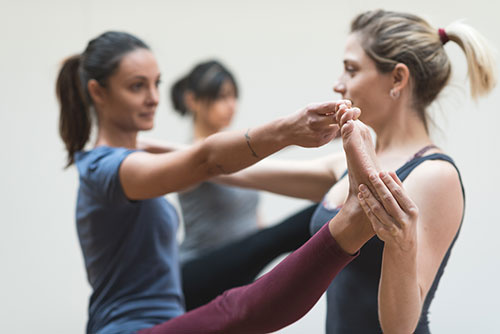
The Ashtanga Yoga Series
Besides the structured philosophy of Ashtanga Yoga, there is also a clear structure to the series of yoga postures and how they are performed, always in the same order. Some postures in these series are joined by dynamic movements called vinyasas.
The series consist of a fixed sequence of starting postures, then an intermediate sequence (beginner, intermediate or advanced sequence) and finally a series of finishing postures or the 'finishing sequence'.
Every new student learns the postures of the series one by one. Each time a posture is mastered, another posture is added until the whole series is complete. Then the student can start with postures from the next series.
The yoga postures are physically quite strenuous and an entire series (including the beginning and ending postures) takes on average 1.5 hours.
These are the series of Ashtanga Yoga:
- Primary Series - Yoga Chikitsa
This means "yoga therapy" This series is designed to purify the internal organs, strengthen the spine, increase flexibility and prepare the body for the more advanced series.
- Intermediate Series - Nadi Shodhana
This means ' cleansing energy channels' Nadi Shodhana focuses on opening the subtle energy channels (nadis) in the body and balancing the energy, through more intensive postures such as backbends and inverted twists.
- Advanced Series - Sthira Bhaga
Meaning 'strength and grace' This series is intended for very advanced practitioners and offers an in-depth exploration of the boundaries of the physical and energetic body, as well as a deeper understanding of the spiritual dimensions of yoga. This Series is again divided into three different sequences, A,B and C.
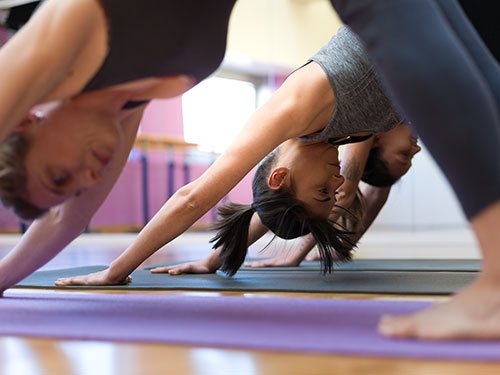
Ashtanga Yoga: something for you?
Has the above piqued your curiosity? Then we advise you to try out in practice whether Ashtanga Yoga suits you.
Keep the following tips in mind for the best experience:
- Choose the right teacher: Ashtanga Yoga is a system handed down from teacher to student. There are many great books and YouTube videos out there, but it is simply best to learn this style of yoga the traditional way: from an experienced and thorough teacher(s).
The teachers trained in Mysore by Pattabhi Jois or his grandson Sharath are officially authorized by them to teach. If you can find someone like that, you can rest assured that you will be working with one of the very best Ashtanga teachers. Unfortunately, only 17 of them are based in the Netherlands & Belgium. You can find them through this database: https://sharathyogacentre.com/authorised-teachers-directory/wpbdp_category/
If you don't have such a person near you, there are certainly other good teachers to be found. But always check if your teacher has a Yoga Alliance recognized diploma. These courses also meet a clear standard and high-quality requirements, so you can be sure you're in the right place.
- Listen to your body: Always listen to your body's signals while practicing Ashtanga Yoga. Respect your limits and avoid overloading or forcing postures. Adjust the intensity of your practice based on how you feel on any given day.
- Be consistent: Consistency is essential in Ashtanga Yoga. Try to practice regularly, preferably at set times and days. By being consistent, you get the most benefits from your practice and progress best. Moreover, you can see this discipline of practicing with great regularity as a spiritual practice in itself: and you will slowly get better and better at that too.
- Combine with other practices: Although Ashtanga Yoga is a powerful and complete practice, sometimes it can be valuable to combine it with other practices such as Yin Yoga, Meditation and/or Pranayama. This can help strengthen and balance your Ashtanga Yoga practice and build a lifestyle that optimally supports both your body and mind.
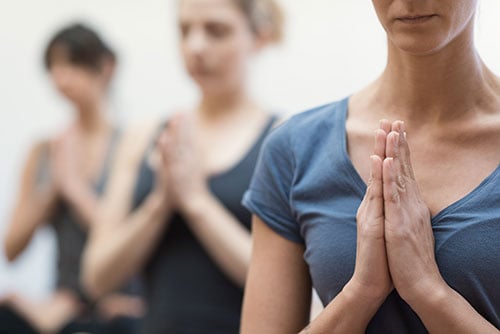
VII. Conclusion
Hopefully this blog has given you a good idea of the history and structure of Ashtanga yoga, and who knows, maybe it has inspired you to explore this dynamic yoga style for yourself.
Soon you will experience the first benefits: more balance, strength, and flexibility, and gradually the deeper effects; more peace of mind, better concentration, and better connection with yourself.
After all, Ashtanga Yoga is not only a physical exercise, but also a lifestyle and a path to self-realization. The practice of Ashtanga Yoga can have a profound impact on your life and help you get more in touch with yourself, discover your inner strength and experience a sense of peace and fulfilment.
However, if you stil have doubts wether Asthanga is best yoga style for you, you can also read our blog: The different yogastyles explained.
And as always, the first step is: just start. So one of Pattabhi Jois' most famous sayings is, "Practice Practice Practice and all will come."



